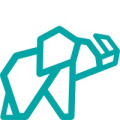Summary
Cut through the green tape
We don't push agendas. At Net Zero Compare, we cut through the hype and fear to deliver the straightforward facts you need for making informed decisions on green products and services. Whether motivated by compliance, customer demands, or a real passion for the environment, you’re welcome here. We provide reliable information—why you seek it is not our concern.
Details
Deep dive
- The Growing Need for Dynamic Line Rating (DLR) Systems in the Age of Renewable Energy
- What is Dynamic Line Rating (DLR)?
- Ampacimon’s DLR System: A Solution for Grid Variability and Stress
- Key Features of Ampacimon’s DLR System
- Use Cases: Ampacimon’s DLR System in Action
- Pricing
The Growing Need for Dynamic Line Rating (DLR) Systems in the Age of Renewable Energy
Renewable energy sources are inherently variable—solar power fluctuates with daylight and weather conditions, while wind energy depends on ever-changing wind speeds. This variability can create stress on traditional power grids, which were not designed to handle such dynamic inputs.
Traditional static ratings of power lines are conservative estimates that do not account for real-time conditions, often leading to underutilization of grid capacity. This mismatch between grid capabilities and renewable energy generation can result in bottlenecks, curtailment of clean energy, and even blackouts during periods of high demand or unexpected weather conditions.
What is Dynamic Line Rating (DLR)?
Dynamic Line Rating (DLR) is an advanced grid management technology that optimizes the capacity of power transmission lines in real-time. Unlike static ratings, DLR systems continuously adjust the rated capacity of power lines based on actual conditions—such as temperature, wind speed, and line sag—enabling utilities to safely transmit more electricity when conditions allow. This real-time monitoring allows grid operators to maximize the usage of existing infrastructure safely and effectively.
This adaptability offers significant benefits:
Maximizes Existing Infrastructure: DLR allows grid operators to fully utilize existing power lines, reducing the need for costly and time-consuming grid upgrades or new transmission projects.
Supports Renewable Energy Integration: As renewable energy sources like wind and solar are variable and intermittent, DLR provides the necessary flexibility to manage these fluctuations without compromising grid stability.
Reduces Operational Costs: By optimizing line usage in real-time, DLR minimizes the risk of congestion and curtailment, reducing operational inefficiencies and lowering overall system costs.
Ampacimon’s DLR System: A Solution for Grid Variability and Stress
"Leading the energy transition with technology solutions for critical transmission and distribution assets"
Source: ampacimon.com
Ampacimon’s Dynamic Line Rating (DLR) system addresses these challenges by providing real-time monitoring and adaptive management of transmission line capacity.
This capability is crucial for integrating renewables, as it provides the flexibility needed to accommodate variable power generation without compromising grid safety. For instance, during periods of high wind, Ampacimon’s DLR system can recognize that lines are cooler due to increased wind speeds, allowing for a higher current flow without overheating. Conversely, it can signal a reduction in capacity during hotter conditions, preventing line overloads and potential failures.
Key Features of Ampacimon’s DLR System
Real-Time Monitoring:
Ampacimon’s DLR system provides continuous, real-time monitoring of transmission line conditions, including sag, tension, and temperature. These parameters are crucial indicators of line capacity and safety. By delivering up-to-the-minute data to grid operators, the system ensures that decisions are based on the current state of the lines, rather than outdated or static estimates. This real-time visibility allows operators to optimize the flow of electricity, preventing overloading and reducing the risk of outages.Advanced Sensors:
The heart of Ampacimon’s DLR system lies in its network of advanced sensors installed directly on power lines. These sensors measure environmental and line-specific parameters—such as line sag, which indicates how much a line droops under varying loads, and tension, which affects line stability. The sensors continuously feed data into the DLR system, allowing for accurate and responsive capacity calculations. This advanced sensor technology is designed to withstand harsh conditions, providing reliable data even in extreme weather, ensuring consistent monitoring and control.Integration with Weather Data:
To enhance the accuracy of its dynamic line ratings, Ampacimon’s DLR system integrates real-time weather data, including wind speed, temperature, and solar radiation. These factors play a significant role in the thermal capacity of power lines—cooler temperatures and strong winds can help dissipate heat, allowing lines to carry more current safely. By incorporating these weather variables, Ampacimon’s system can predict line capacity more accurately, enabling the grid to handle the variable nature of renewable energy sources like wind and solar. This integration not only boosts grid safety but also allows for greater utilization of renewable energy, supporting the transition to a more sustainable power grid.
Use Cases: Ampacimon’s DLR System in Action
European Deployments
Belgium
Elia, the Belgian transmission system operator, has implemented Ampacimon's DLR technology across multiple high-voltage lines in their network. The system is used on various 380 kV, 220 kV, and 150 kV lines, including critical connections like Mercator-Bruegel and Gramme-Champion. By dynamically adjusting line ratings based on real-time conditions, Ampacimon’s technology has allowed Elia to increase the transmission capacity of existing lines, thereby avoiding costly infrastructure upgrades. This enhanced flexibility has been critical during periods of high wind generation, allowing more clean energy to be transported efficiently to where it’s needed most.
Netherlands
Tennet, the Dutch transmission system operator, has also adopted Ampacimon's DLR solution to optimize their grid operations. As the Netherlands works towards increasing its share of renewable energy, particularly from offshore wind farms in the North Sea, the pressure on the existing grid infrastructure has intensified.
France
RTE, the French transmission system operator, has implemented Ampacimon's technology to enhance its grid management capabilities. France’s energy transition goals include increasing the share of renewables in its energy mix, which poses challenges to grid stability due to the intermittent nature of sources like wind and solar.
North American Deployments
United States
Several utility companies in the US have deployed Ampacimon's DLR systems:
PPL (Pennsylvania Power and Light) has implemented the technology to improve grid efficiency.
NYPA (New York Power Authority) has also adopted Ampacimon's solution for better grid management.
APS (Arizona Public Service) has integrated DLR systems to optimize their transmission network.
Canada
Hydro Québec, one of the largest electricity generators in North America, has implemented Ampacimon's DLR technology to enhance its grid operations. With a significant portion of its energy generated from hydroelectric power, Hydro Québec is focused on maintaining high efficiency in its grid operations, especially as it exports large amounts of clean energy to neighbouring regions, including the Northeastern United States.
Other International Deployments
Japan
TEPCO (Tokyo Electric Power Company), Japan’s largest power company, has adopted Ampacimon's DLR solution to improve the flexibility and efficiency of its power grid. With Japan’s growing commitment to renewable energy and the need to modernize its ageing grid, Ampacimon’s technology plays a critical role in maximizing existing infrastructure.
India
MSETCL (Maharashtra State Electricity Transmission Company Limited), one of India’s largest state transmission companies, has implemented Ampacimon's technology to enhance its transmission network capabilities. India’s rapid increase in renewable energy installations, particularly solar and wind, has placed additional stress on its grid, necessitating innovative solutions.
South America
ENEL has deployed Ampacimon's DLR systems in their respective regions to optimize grid operations and integrate renewable energy sources more effectively. In countries like Brazil and Chile, where ENEL operates extensive renewable projects, the DLR system enables a more efficient flow of wind and solar energy across the grid, minimizing losses and maximizing grid capacity.
Pricing
For a precise quote, grid operators or interested parties would need to contact Ampacimon directly to discuss their specific requirements, including the size and configuration of their transmission network, any customization needs, and the level of ongoing support desired. Ampacimon typically provides tailored proposals based on a detailed assessment of each client’s needs and operational goals.






